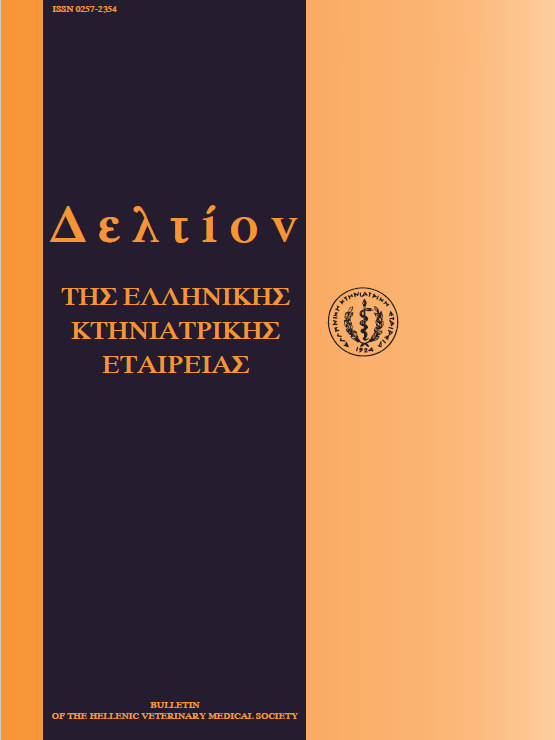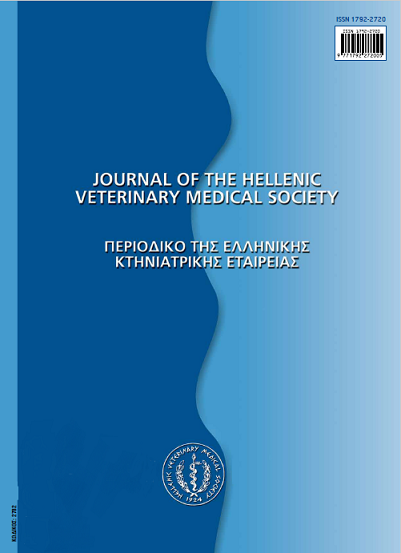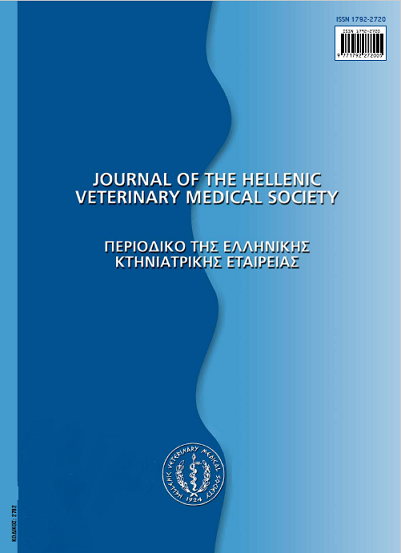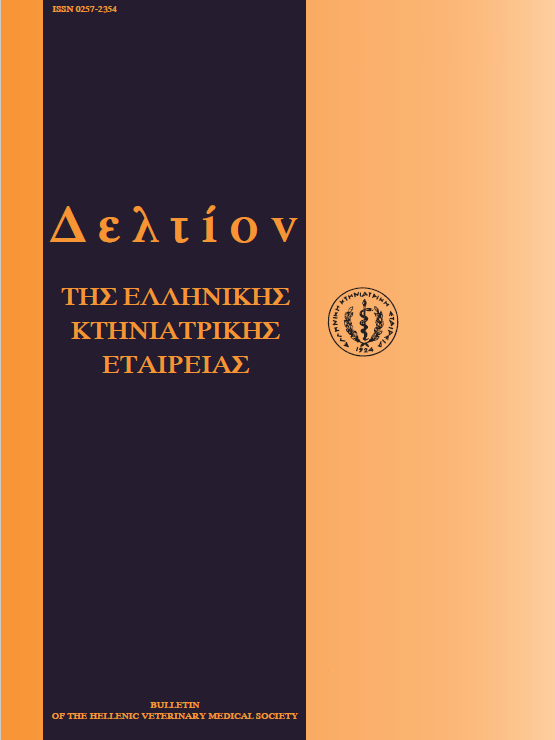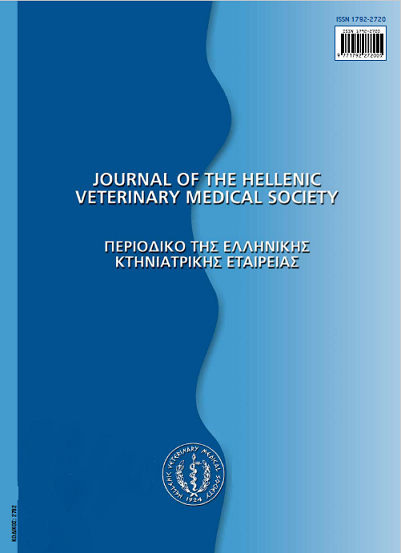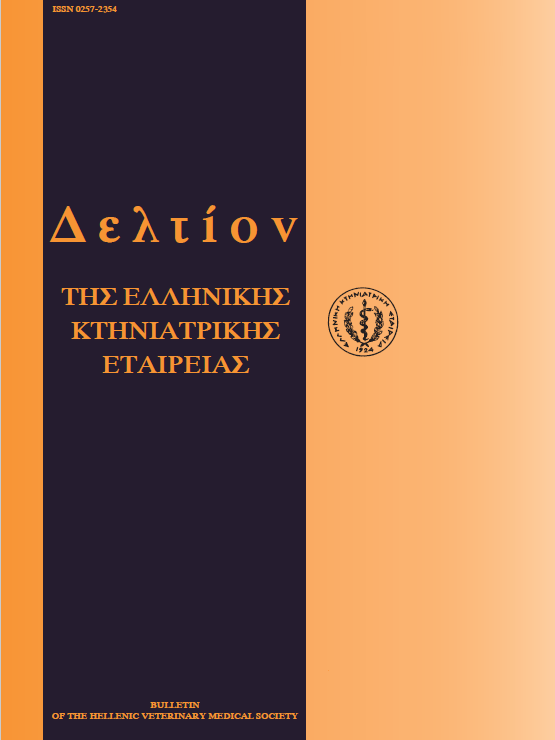Αναφορά σε ένα περιστατικό επιθηλιοτρόπου λεμφώματος (σπογγοειδής μυκητίαση) σε σκύλο
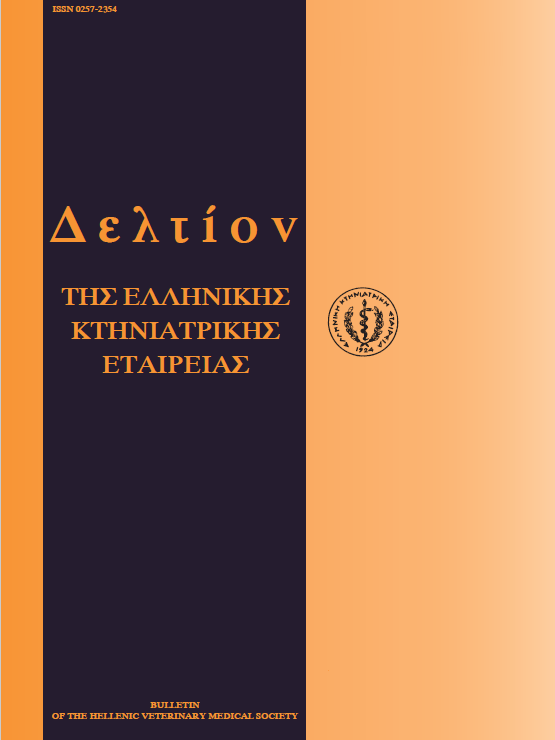
Περίληψη
Στην εργασία αυτή παρουσιάζονται η κλινική εικόνα, η διάγνωση και η θεραπευτική αντιμετώπιση ενός σκύλου με επιθηλιοτροπο λέμφωμα (σπογγοειδής μυκητίαση).Το ζώο, που ήταν αρσενικό, ακαθόριστης φυλής και ηλικίας 13 χρόνων, προσκομίσθηκε στην Κλινική επειδή τους τελευταίους 5 μήνες παρουσίαζε μη κνησμώδεις δερματικές αλλοιώσεις. Το πλέον εντυπωσιακό εύρημα της κλινικής εξέτασης ήταν η πολυεστιακή προς διάχυτη αποφολιδωτική ερυθροδερμία. Η διάγνωση στηρίχθηκε στην ιστοπαθολογική εξέταση των βιοψιών από το δέρμα, στις οποίες διαπιστώθηκε έντονη διήθηση του χορίου και της επιδερμίδας από άτυπα και πολύμορφα λεμφοκύτταρα και παρουσία μικροαποστημάτων του Pautrier στην τελευταία. Η χορήγηση ισοτρετινοΐνης από το στόμα δεν μπόρεσε να αποτρέψει την επιδείνωση και επέκταση των δερματικών αλλοιώσεων,αλλά η προσθήκη L-ασπαραγινάσης και ο διπλασιασμός της δόσης της ισοτρετινοΐνης βελτίωσαν την κλινική εικόνα και την ποιότητα ζωής του ζώου. Ο σκύλος πέθανε 15 και 10 μήνες μετά την πρωτοεμφάνιση των δερματικών αλλοιώσεων και τη διάγνωση, αντίστοιχα, υστέρα από σύντομη περίοδο κατάπτωσης και ανορεξίας.
Λεπτομέρειες άρθρου
- Πώς να δημιουργήσετε Αναφορές
-
SARIDOMICHELAKIS (Μ. Ν. ΣΑΡΙΔΟΜΙΧΕΛΑΚΗΣ) M. N., KOUTINAS (X.K. ΚΟΥΤΙΝΑΣ) C. K., & KOUTINAS (Α. Φ. ΚΟΥΤΙΝΑΣ) A. F. (2018). Αναφορά σε ένα περιστατικό επιθηλιοτρόπου λεμφώματος (σπογγοειδής μυκητίαση) σε σκύλο. Περιοδικό της Ελληνικής Κτηνιατρικής Εταιρείας, 52(4), 286–291. https://doi.org/10.12681/jhvms.15459
- Τεύχος
- Τόμ. 52 Αρ. 4 (2001)
- Ενότητα
- Case Report

Αυτή η εργασία είναι αδειοδοτημένη υπό το CC Αναφορά Δημιουργού – Μη Εμπορική Χρήση 4.0.
Οι συγγραφείς των άρθρων που δημοσιεύονται στο περιοδικό διατηρούν τα δικαιώματα πνευματικής ιδιοκτησίας επί των άρθρων τους, δίνοντας στο περιοδικό το δικαίωμα της πρώτης δημοσίευσης.
Άρθρα που δημοσιεύονται στο περιοδικό διατίθενται με άδεια Creative Commons 4.0 Non Commercial και σύμφωνα με την άδεια μπορούν να χρησιμοποιούνται ελεύθερα, με αναφορά στο/στη συγγραφέα και στην πρώτη δημοσίευση για μη κερδοσκοπικούς σκοπούς.
Οι συγγραφείς μπορούν να καταθέσουν το άρθρο σε ιδρυματικό ή άλλο αποθετήριο ή/και να το δημοσιεύσουν σε άλλη έκδοση, με υποχρεωτική την αναφορά πρώτης δημοσίευσης στο J Hellenic Vet Med Soc
Οι συγγραφείς ενθαρρύνονται να καταθέσουν σε αποθετήριο ή να δημοσιεύσουν την εργασία τους στο διαδίκτυο πριν ή κατά τη διαδικασία υποβολής και αξιολόγησής της.



